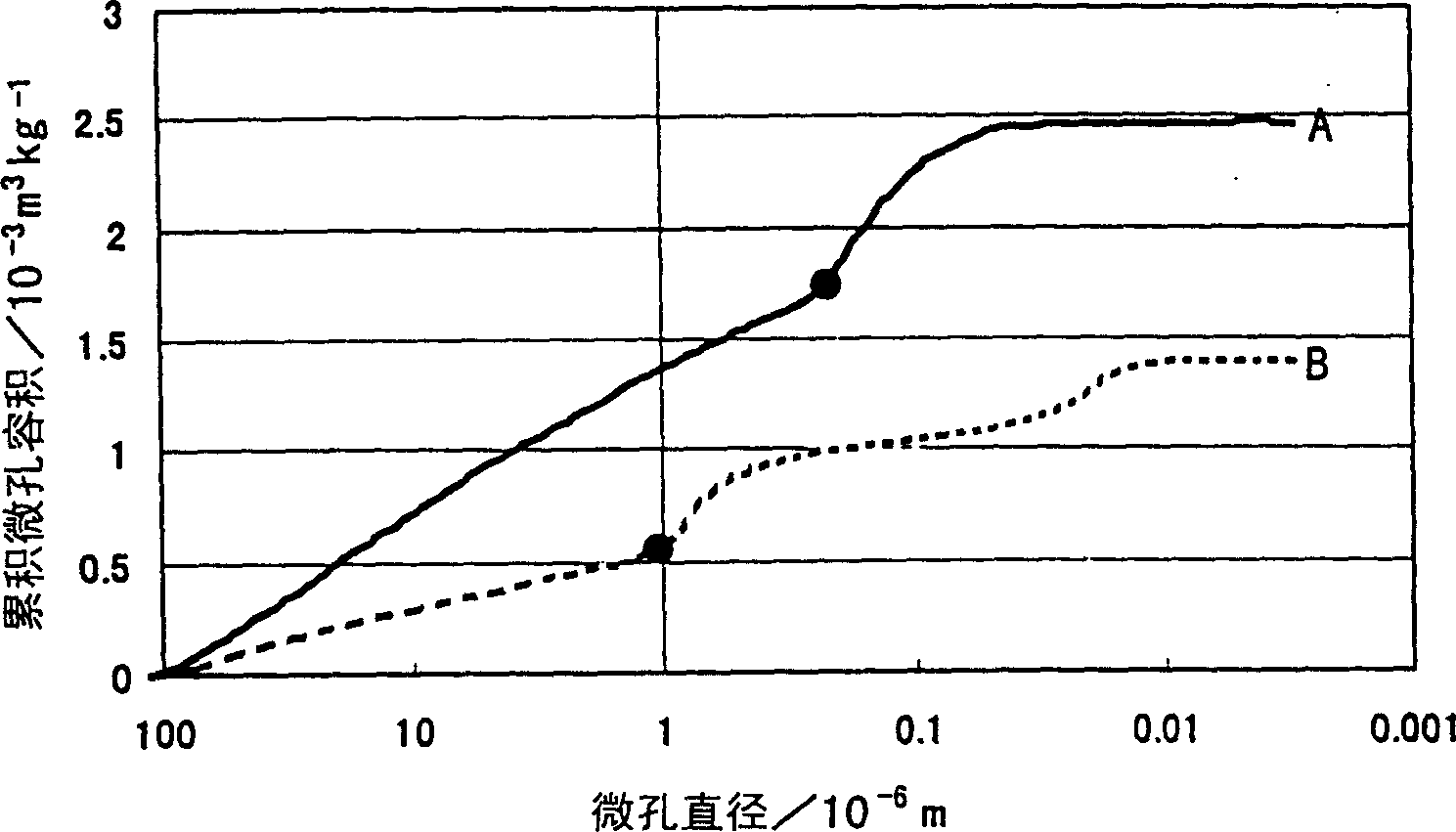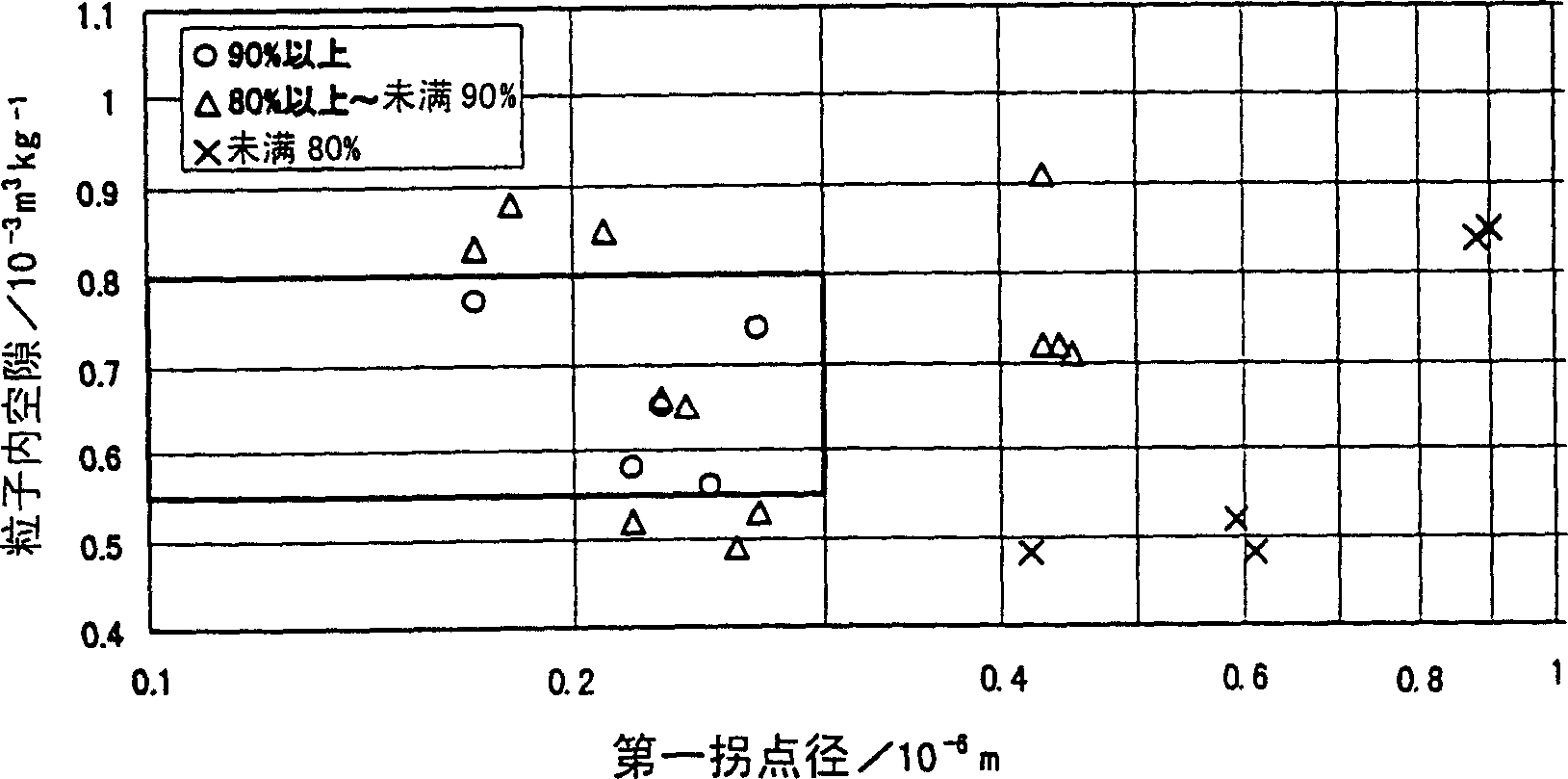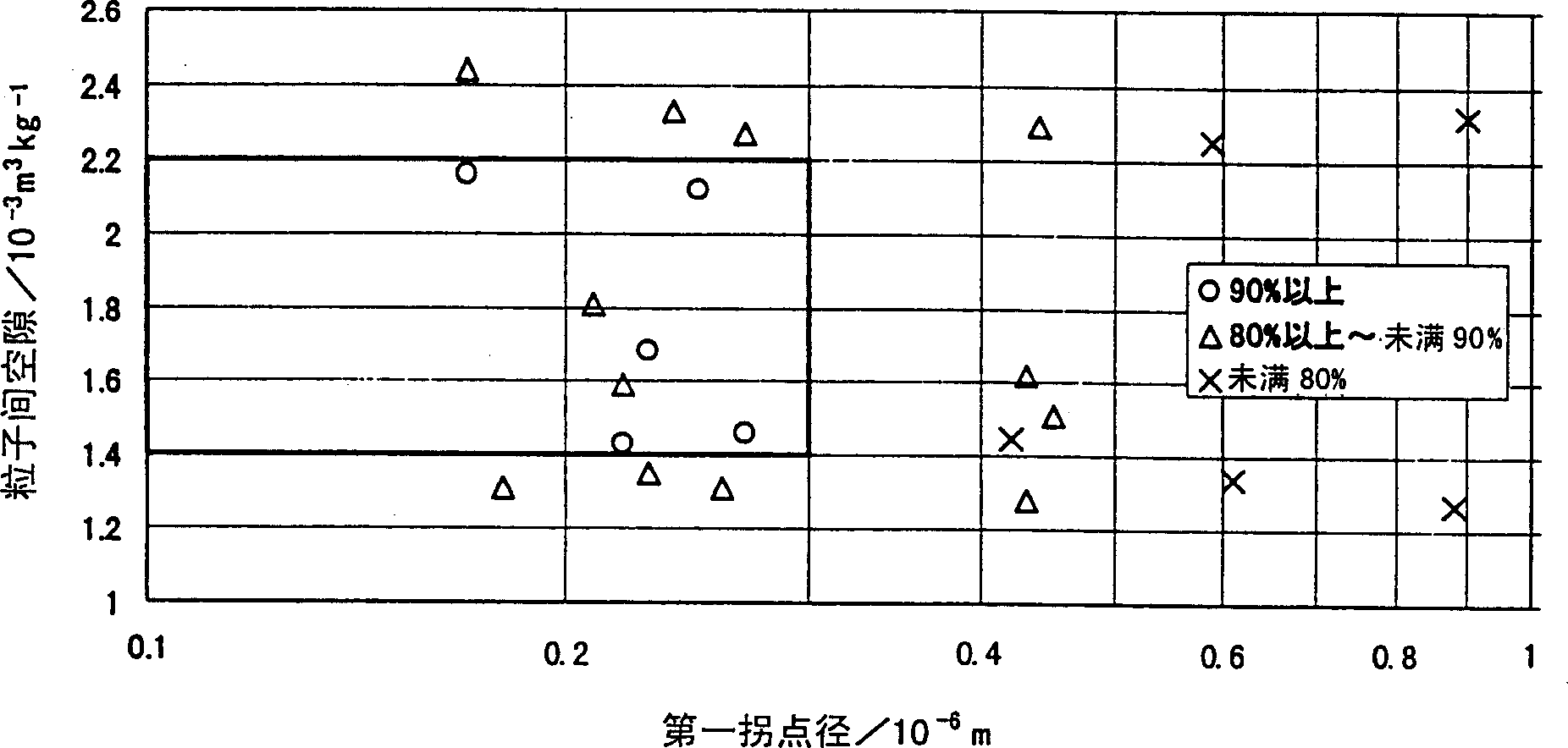Magnesium oxide particle aggregate
A particle aggregation, magnesium oxide technology, applied in magnesium oxide, furnace type, solid-state chemical plating, etc., can solve problems such as insufficient reaction
- Summary
- Abstract
- Description
- Claims
- Application Information
AI Technical Summary
Problems solved by technology
Method used
Image
Examples
Embodiment 1
[0065] The magnesite is roasted at 850°C for 1 hour in a rotary kiln, and crushed into magnesium oxide with a cage crusher. In order to control the particle structure, magnesium oxide is added to water so that the concentration of magnesium hydroxide after the reaction is 3mol / kg, stirred at 400rpm, and reacted at 85-95°C for 2 hours to generate the precursor magnesium hydroxide. After the generated magnesium hydroxide is filtered with a filter press, washed with water and dried, the obtained magnesium hydroxide is roasted in a rotary kiln at 900°C at 22°C with a final reaction rate of 40% citric acid activity in the range of 120-140 For 1 hour, it is baked to form magnesium oxide particle aggregates. Then, it was pulverized with a hammer mill at a hammer rotation speed of 3500 rpm and a classifier rotation speed of 3000 rpm to produce magnesium oxide particle aggregates having a predetermined particle aggregation structure.
Embodiment 2
[0067] The calcium hydroxide slurry was added into the brine so that the concentration of the reacted magnesium hydroxide was 2 mol / kg, stirred at 600 rpm, and reacted at 80° C. for 2 hours. Then, filter, wash, and dry the magnesium hydroxide with a filter press, use a rotary kiln at 890°C for 1 hour at 22°C and a citric acid activity of 40% at a final reaction rate of 120 to 140 for 1 hour. It is an aggregate of magnesium oxide particles. Then, the powder was pulverized by a pulverizer at a hammer rotation speed of 3500 rpm and a classifier rotation speed of 4000 rpm to produce a magnesium oxide particle aggregate having a predetermined particle aggregation structure.
Embodiment 3
[0069] Calcium hydroxide slurry was added to magnesium chloride, so that the concentration of magnesium hydroxide after the reaction was 1mol / kg, and then 10ppm coagulant polyaluminum chloride was added, stirred at 400rpm, and reacted at 60°C for 20 hours. Then, filter, wash, and dry the magnesium hydroxide with a filter press, use a rotary kiln at 900°C for 1 hour at 22°C and a citric acid activity of 40% at a final reaction rate of 120 to 140 for 1 hour. It is an aggregate of magnesium oxide particles. Then, the powder was pulverized with a pulverizer at a hammer rotation speed of 3200 rpm and a classifier rotation speed of 4000 rpm to produce a magnesium oxide particle aggregate having a predetermined particle aggregation structure.
PUM
| Property | Measurement | Unit |
|---|---|---|
| density | aaaaa | aaaaa |
Abstract
Description
Claims
Application Information
 Login to View More
Login to View More - R&D
- Intellectual Property
- Life Sciences
- Materials
- Tech Scout
- Unparalleled Data Quality
- Higher Quality Content
- 60% Fewer Hallucinations
Browse by: Latest US Patents, China's latest patents, Technical Efficacy Thesaurus, Application Domain, Technology Topic, Popular Technical Reports.
© 2025 PatSnap. All rights reserved.Legal|Privacy policy|Modern Slavery Act Transparency Statement|Sitemap|About US| Contact US: help@patsnap.com



